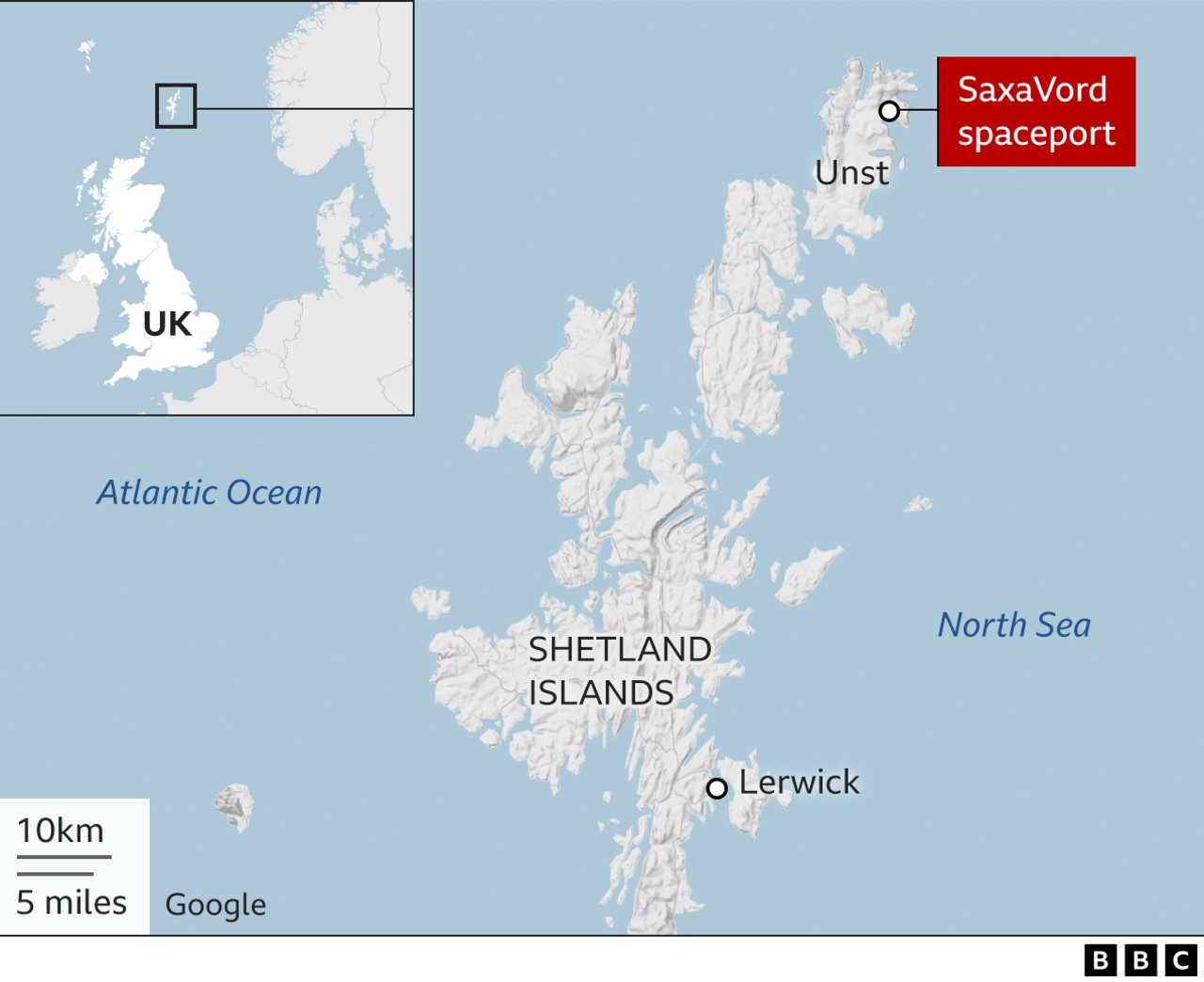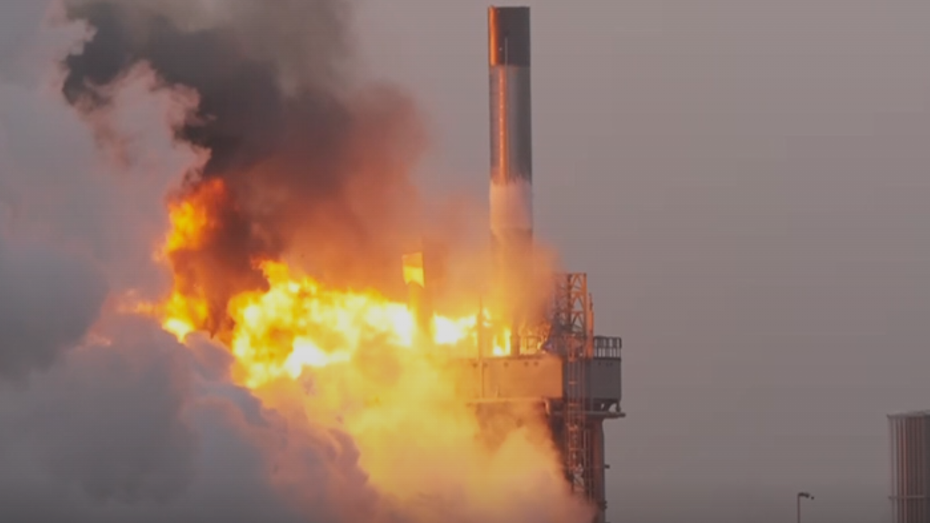UK first as vertical rocket launch licence granted

- Published
A company behind a rocket engine which exploded during a test at the UK's new spaceport in Shetland could still be the first in Europe to carry out vertical launches into orbit.
German firm Rocket Factory Augsburg (RFA) have been awarded the first Launch Operator Licence allowing it to launch rockets from the SaxaVord Spaceport.
The licence, granted by the Civil Aviation Authority (CAA), gives permission for RFA to launch up to ten rockets a year into space carrying a number of small satellites and other payloads.
RFA described the licence, the first of its kind to be awarded in Europe, as a "ground-breaking moment".
Rob Bishton, from the CAA, said: "This is a new era for aerospace and granting the first vertical launch licence from UK soil builds towards a historic milestone for the nation.
"This licence is the culmination of extensive hard work behind the scenes to put appropriate safety and environmental measures in place before launch."
Rocket firm shelves plan for Highland spaceport
- Published4 December 2024
The Scottish spaceport stuck in limbo
- Published17 December 2024
Rocket engine explodes during test at Shetland spaceport
- Published19 August 2024
SaxaVord Spaceport already has all of the licences it needs to operate and hope to eventually launch up to 30 rockets per year.
Another six rocket companies are planning to launch from the Shetland site, but RFA are furthest ahead in their planning.
Their first test flight is already fully booked with seven German companies already committed to putting their valuable payload on board.
UK company, Orbex, recently announced that it had moved its launch plan from the Sutherland Spaceport in north West Scotland to the SaxaVord Spaceport.
Another German company, HyImpulse, hopes to launch its own vehicle into orbit from the Unst site.
Scottish company, Skyrora, are also waiting on approval of their own Launch Operator Licence from the CAA.
If granted, it plans to launch its Skylark L vehicle from Shetland in late 2025 or early 2026 with up to 16 launches per year after that.

The spaceport is located in one of Scotland's most northerly points
Jörn Spurmann, co-founder of RFA, said: "This is a ground-breaking moment for RFA and for Europe's space industry.
"Securing the first-ever launch licence outside ESA's established site in Kourou is a powerful endorsement of our technical excellence and a turning point for European space innovation.
"This licence marks Europe's bold step toward independent, competitive, and sustainable space access.
"By enabling cost-effective and flexible launches from European main land, we are laying the foundation for a new era of space exploration and commercialisation, ensuring Europe remains at the forefront of the global space race."
Scottish government business minister, Richard Lochhead, said the news was a "monumental moment" for the Scottish space sector.
He added: "Not only can Scotland manufacture satellites, but now we are well on our way to launching them and providing expert analysis of the data they subsequently provide."
The first launch
RFA are confident the first test flight of the 30m RFA ONE rocket will happen in 2025.
Spurmann told BBC Scotland News he was realistic about the first rocket making it into orbit.
He added: "The first launch is a test flight. Let's see how far we can get with it.
"The statistics worldwide are very much against us, but let's see how far we can get."
The rocket will take off from Launch Pad 1 'Fredo' at the SaxaVord site.
It will then travel north west, out over the Norwegian Sea and the North Pole, before hopefully entering orbit around 500km above the surface of the earth.
A Launch Exclusion Zone (LEZ) will be implemented around Shetland during the launch window and restrictions placed on any aircraft or shipping within the area.
After launch, the first and second stages of each rocket will separate and fall away once the fuel has been used, allowing the third stage to carry on with the valuable payload.

An earlier launch was unsuccessful and ended in an explosion
Unlike Elon Musk's Starship rocket though the fuel sections of the rocket will not be reused.
Instead, the first and second stages will fall back into the sea, sinking to the bottom to form an artificial reef and serve as a habitat for marine life.
Last year, during a test known as a hot-fire, an RFA engine exploded at the SaxaVord site, resulting in a some damage to the launch platform and completely destroyed the engine.
A new 'hot-fire' test of the nine-engine Helix will need to be carried out on the launch stool before the go ahead is given for launch.
The rest of the three-stage RFA ONE rocket is already in the final stages of completion in Augsburg, Germany and will be assembled in Shetland over the coming months.